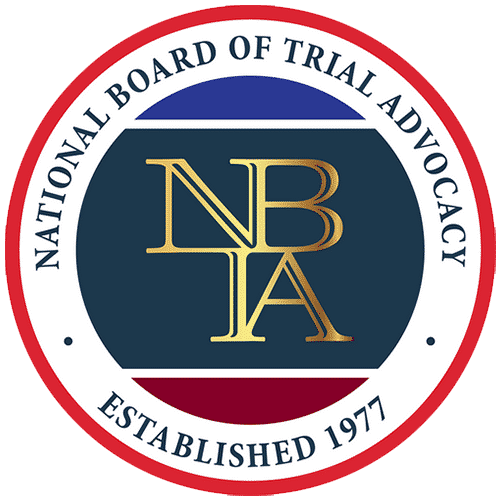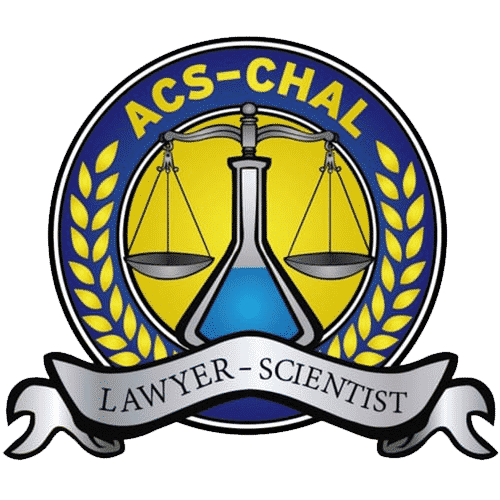It is important for people to understand that drug manufacturing charges not only can result in serious state charges, but some cases could also be prosecuted as violations of federal law. In either scenario, a violation could carry the risk of possible mandatory minimum sentencing that involves lengthy prison sentences and huge fines.
Columbus, OH Drug Manufacturing Lawyer
Are you currently facing criminal charges for alleged drug manufacturing in the greater Columbus area of Ohio? You are going to want to make sure that you have the dedicated team of attorneys at Sabol | Mallory on your side.
Our firm regularly defends people all over Ohio against all kinds of drug charges and has a record of success to back up our commitment to you. Call (614) 300-5088 or contact us online today to receive a free consultation that will allow us to look at your case and help you understand all of your legal options.
Drug Manufacturing Charges in Ohio
Ohio Revised Code § 2925.04(A) establishes that no person can knowingly cultivate marijuana or knowingly manufacture or otherwise engage in any part of the production of a controlled substance, but Ohio Revised Code § 2925.04(B) provides that this section of state law does not apply to any person listed in Ohio Revised Code § 2925.03(B)(1), (2), or (3) to the extent and under the circumstances described in those divisions. Ohio Revised Code § 2925.03 is the state drug trafficking law, and Ohio Revised Code § 2925.03(B) establishes that the law does not apply to any of the following:
● Manufacturers, licensed health professionals authorized to prescribe drugs, pharmacists, owners of pharmacies, and other persons whose conduct is in accordance with Chapters 3719, 4715, 4723, 4729, 4730, 4731, and 4741 of the Ohio Revised Code;
● If the alleged offense involves an anabolic steroid, any person who is conducting or participating in a research project involving the use of an anabolic steroid if the project has been approved by the United States food and drug administration;
● Any person who sells, offers for sale, prescribes, dispenses, or administers for livestock or other nonhuman species an anabolic steroid that is expressly intended for administration through implants to livestock or other nonhuman species and approved for that purpose under the "Federal Food, Drug, and Cosmetic Act," 52 Stat. 1040 (1938), 21 U.S.C.A. 301, as amended, and is sold, offered for sale, prescribed, dispensed, or administered for that purpose in accordance with that act.
Under Ohio Revised Code § 2925.04(C)(1), any violation of Ohio Revised Code § 2925.04(A) involving any drug other than marijuana is considered illegal manufacture of drugs. Ohio Revised Code § 2925.04(C)(2) states that if the drug involved in the violation of Ohio Revised Code § 2925.04(A) is any compound, mixture, preparation, or substance included in schedule I or II, with the exception of methamphetamine or marijuana, illegal manufacture of drugs is asecond-degree felony and the court must impose a mandatory second-degree felony mandatory prison term. If the drug involved in the violation is any compound, mixture, preparation, or substance included in schedule I or II, with the exception of methamphetamine or marijuana, and if the offense was committed in the vicinity of a juvenile or in the vicinity of a school, illegal manufacture of drugs is a first-degree felony, and the court must impose a mandatory first-degree felony mandatory prison term.
Ohio Revised Code § 2925.04(C)(3) further states that if the drug involved in a violation of Ohio Revised Code § 2925.04(A) is methamphetamine, the penalty for the violation shall be determined as follows:
● If the drug involved in the violation is methamphetamine, illegal manufacture of drugs is a second-degree felony, and, subject to Ohio Revised Code § 2925.04(E), the court must impose a mandatory prison term on the alleged offender of not less than three years. If the alleged offender has been previously convicted of or pleaded guilty to a violation of Ohio Revised Code § 2925.04(A), a violation of Ohio Revised Code § 2919.22(B)(6), or a violation of Ohio Revised Code § 2925.041(A), the court must impose as a mandatory prison term a second-degree felony mandatory prison term that is not less than five years.
● If the drug involved in the violation is methamphetamine and if the offense was committed in the vicinity of a juvenile, in the vicinity of a school, or on public premises, illegal manufacture of drugs is a first-degree felony, and, subject to Ohio Revised Code § 2925.04(E), the court must impose a mandatory prison term on the alleged offender of not less than four years. If the alleged offender has been previously convicted of or pleaded guilty to a violation of Ohio Revised Code § 2925.04(A), a violation of Ohio Revised Code § 2919.22(B)(6), or a violation of Ohio Revised Code § 2925.041(A), the court must impose as a mandatory prison term a first degree-felony mandatory prison term that is not less than five years.
Under Ohio Revised Code § 2925.04(C)(4), if the drug involved in the violation of Ohio Revised Code § 2925.04(A) is any compound, mixture, preparation, or substance included in schedule III, IV, or V, illegal manufacture of drugs is a third-degree felony or, if the offense was committed in the vicinity of a school or in the vicinity of a juvenile, a second-degree felony, and there is a presumption for a prison term for the offense.
Drug Manufacturing Penalties in Columbus
State charges for drug manufacturing are punishable as follows in Ohio:
● Third-Degree Felony — Up to five years in prison and/or a fine of up to $10,000
● Second-Degree Felony — Up to eight years in prison and/or a fine of up to $15,000
● First-Degree Felony — Up to 11 years in prison and/or a fine of up to $20,000
Federal drug manufacturing crimes can also trigger enormous penalties. Under Title 21 U.S. Code (U.S.C.) § 841(a), it is illegal for any person knowingly or intentionally manufacture, distribute, or dispense, or possess with intent to manufacture, distribute, or dispense, a controlled substance; or create, distribute, or dispense, or possess with intent to distribute or dispense, a counterfeit substance.
When a violation of 21 U.S.C. § 841(a) involves any of the following:
● 1 kilogram or more of a mixture or substance containing a detectable amount of heroin;
● 5 kilograms or more of a mixture or substance containing a detectable amount of coca leaves, except coca leaves and extracts of coca leaves from which cocaine, ecgonine, and derivatives of ecgonine or their salts have been removed; cocaine, its salts, optical and geometric isomers, and salts of isomers; ecgonine, its derivatives, their salts, isomers, and salts of isomers; or any compound, mixture, or preparation which contains any quantity of any of the substances referred to in subclauses (I) through (III);
● 280 grams or more of a mixture or substance described in clause (ii) which contains cocaine base;
● 100 grams or more of phencyclidine (PCP) or 1 kilogram or more of a mixture or substance containing a detectable amount of phencyclidine (PCP);
● 10 grams or more of a mixture or substance containing a detectable amount of lysergic acid diethylamide (LSD);
● 400 grams or more of a mixture or substance containing a detectable amount of N-phenyl-N- [ 1- ( 2-phenylethyl ) -4-piperidinyl ] propanamide or 100 grams or more of a mixture or substance containing a detectable amount of any analogue of N-phenyl-N-[1-(2-phenylethyl)-4-piperidinyl] propanamide;
● 1000 kilograms or more of a mixture or substance containing a detectable amount of marihuana, or 1,000 or more marihuana plants regardless of weight; or
● 50 grams or more of methamphetamine, its salts, isomers, and salts of its isomers or 500 grams or more of a mixture or substance containing a detectable amount of methamphetamine, its salts, isomers, or salts of its isomers;
An alleged offender can be sentenced to a term of imprisonment which may not be less than 10 years or more than life. If death or serious bodily injury results from the use of such substance, the sentence cannot be less than 20 years or more than life. A fine cannot exceed the greater of that authorized in accordance with the provisions of title 18 or $10 million if the alleged offender is an individual or $50 million if the alleged offender is other than an individual. When an alleged offender commits a violation after a prior conviction for a serious drug felony or serious violent felony has become final, they can be sentenced to a term of imprisonment of not less than 15 years and not more than life imprisonment, but they may be sentenced to life imprisonment if death or serious bodily injury results from the use of such substance and a fine not to exceed the greater of twice that authorized in accordance with the provisions of title 18 or $20 million if the alleged offender is an individual or $75 million if the alleged offender is other than an individual. If the alleged violation comes after two or more prior convictions for a serious drug felony or serious violent felony have become final, the alleged offender can be sentenced to a term of imprisonment of not less than 25 years and fined in accordance with the preceding sentence.
When an alleged violation of 21 U.S.C. § 841(a) involves any of the following:
● 100 grams or more of a mixture or substance containing a detectable amount of heroin;
● 500 grams or more of a mixture or substance containing a detectable amount of coca leaves, except coca leaves and extracts of coca leaves from which cocaine, ecgonine, and derivatives of ecgonine or their salts have been removed; cocaine, its salts, optical and geometric isomers, and salts of isomers; ecgonine, its derivatives, their salts, isomers, and salts of isomers; or any compound, mixture, or preparation which contains any quantity of any of the substances referred to in subclauses (I) through (III);
● 28 grams or more of a mixture or substance described in clause (ii) which contains cocaine base;
● 10 grams or more of phencyclidine (PCP) or 100 grams or more of a mixture or substance containing a detectable amount of phencyclidine (PCP);
● 1 gram or more of a mixture or substance containing a detectable amount of lysergic acid diethylamide (LSD);
● 40 grams or more of a mixture or substance containing a detectable amount of N-phenyl-N- [ 1- ( 2-phenylethyl ) -4-piperidinyl ] propanamide or 10 grams or more of a mixture or substance containing a detectable amount of any analogue of N-phenyl-N-[1-(2-phenylethyl)-4-piperidinyl] propanamide;
● 100 kilograms or more of a mixture or substance containing a detectable amount of marihuana, or 100 or more marihuana plants regardless of weight; or
● 5 grams or more of methamphetamine, its salts, isomers, and salts of its isomers or 50 grams or more of a mixture or substance containing a detectable amount of methamphetamine, its salts, isomers, or salts of its isomers;
The alleged offender will be sentenced to a term of imprisonment which cannot be less than five years and not more than 40 years. If death or serious bodily injury results from the use of such substance, the sentence must not be less than 20 years or more than life, and an alleged offender can also be ordered to pay a fine not to exceed the greater of that authorized in accordance with the provisions of title 18 or $5 million if the alleged offender is an individual or $25 million if the alleged offender is other than an individual. If an alleged offender commits a violation after a prior conviction for a serious drug felony or serious violent felony has become final, they can be sentenced to a term of imprisonment which may not be less than 10 years and not more than life imprisonment, but cases involving death or serious bodily injury resulting from the use of such substance can lead to sentences of life imprisonment as well as a fine not to exceed the greater of twice that authorized in accordance with the provisions of title 18 or $8 million if the alleged offender is an individual or $50 million if the alleged offender is other than an individual.
Finally, in the case of a controlled substance in schedule I or II, gamma hydroxybutyric (GHB) acid (including when scheduled as an approved drug product for purposes of section 3(a)(1)(B) of the Hillory J. Farias and Samantha Reid Date-Rape Drug Prohibition Act of 2000), or 1 gram of flunitrazepam, the alleged offender can be sentenced to a term of imprisonment of not more than 20 years, but if death or serious bodily injury results from the use of such substance can be sentenced to a term of imprisonment of not less than 20 years or more than life and a fine not to exceed the greater of that authorized in accordance with the provisions of title 18 or $1 million if the alleged offender is an individual or $5 million if the alleged offender is other than an individual. If the alleged offender commits such a violation after a prior conviction for a felony drug offense has become final, they can be sentenced to a term of imprisonment of not more than 30 years although if death or serious bodily injury results from the use of such substance they can be sentenced to life imprisonment and a fine not to exceed the greater of twice that authorized in accordance with the provisions of title 18 or $2 million if the alleged offender is an individual or $10 million if the alleged offender is other than an individual.
Ohio Drug Manufacturing Resources
Drug production and trafficking — The United Nations Office on Drugs and Crime (UNODC) is a United Nations office established in 1997 as the Office for Drug Control and Crime Prevention by combining the United Nations International Drug Control Program (UNDCP) and the Crime Prevention and Criminal Justice Division in the United Nations Office, but was renamed the UNDOC in 2002. Use this website to view data on drug trafficking trends including arrests, seizures, price, and purity of illicit drugs submitted by the Member States through the Annual Reports Questionnaires (ARQ). You can find drug seizure reports, illicit crop monitoring information, and an online database.
2019 National Drug Threat Assessment - Drug Enforcement Administration (DEA) — View this December 2019 publication from the DEA prepared by the agency’s Strategic Intelligence Section. According to the report, Automation of Reports and Consolidated Orders System (ARCOS) indicated 10.8 billion dosage units of opioid CPDs were manufactured and distributed in 2018, with more than 79 percent being oxycodone and hydrocodone products. The report also states that Asian Transnational Criminal Organizations (TCOs) generally control the supply of methyldioxymethamphetamine (MDMA) in most United States markets, and MDMA, in both tablet and powder form, is typically either imported from China to Canada or manufactured in clandestine laboratories in Canada, then smuggled across the Northern Border into the United States.
Sabol | Mallory | Columbus Drug Manufacturing Attorney
If you were arrested for an alleged rug manufacturing crime in the Columbus area of Ohio, you cannot be without an experienced criminal defense lawyer. Make sure your first phone call is to the qualified team at Sabol | Mallory.
Our firm has taken on drug cases of all levels, so we will not be intimidated by overly aggressive prosecutors. You can have us look at your case and begin formulating a defense as soon as you call (614) 300-5088 or contact us online to receive a free consultation.











